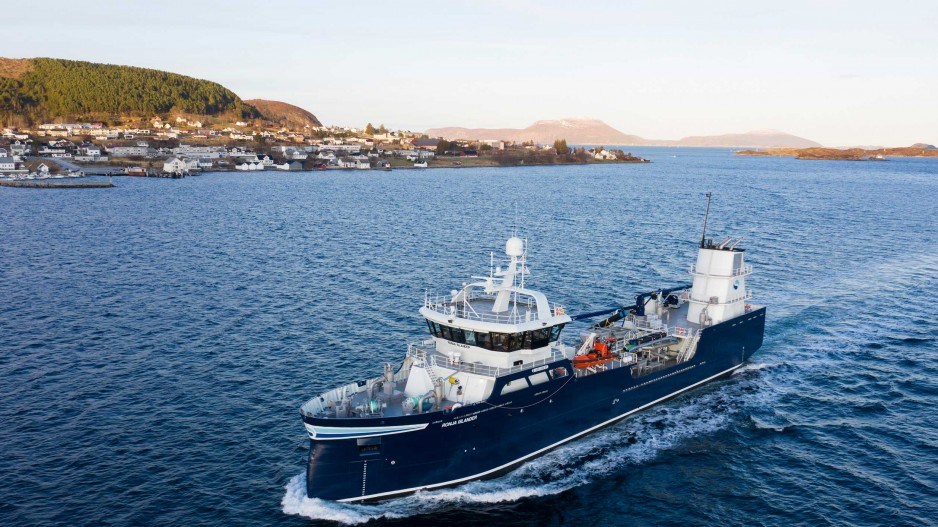A new transport vessel designed to minimize infections in farmed salmon will arrive Sunday, February 9 from Norway, where it was built.
The $40 million “wellboat” will be used by Grieg Seafood to transport smolts from its hatchery in Gold River to its 19 salmon farms on the west coast of Vancouver Island and the Sunshine Coast.
The $40 million investment in Grieg’s B.C. operations comes at a time when its parent company is also sinking $1 billion in Atlantic Canada. Grieg Seafood recently announced a $1 billion acquisition of Grieg Newfoundland.
In addition to transporting smolts, Grieg’s new wellboat will also be used to treat Atlantic salmon in open-net pens each year prior to the migration of juvenile wild salmon to minimize the risk of spreading sea lice.
“It’s capable of moving all of our smolts fully 100% closed, which is a first for B.C. here, as well as using it for freshwater sea lice treatments and hydrogen peroxide treatments,” said Dean Trethewey, director of regulatory and production, for Grieg Seafood.
Essentially, the new vessel is like a big, floating aquarium.
Without an onboard recirculation system that keeps the water oxygenated, conventional transport vessels can only transport fish for so many hours before they risk being oxygen starved. But if the water in its holding tanks is refreshed with ocean water, it risks introducing pathogens into the tank and infecting healthy smolts.
“All of our smolts are 100% disease-free, which we test for before they leave the hatcheries,” Trethewey said. “I know there’s a lot of talk about PRV and that, but all of our fish are 100% clean when they’re put into the boat.”
In order to keep them that way, however, they need to be transported without exposing them to the pathogen-filled ocean.
The new wellboat is a fully contained system that recirculates and filters the water, and sterilizes it with ultra violet radiation. It also removes CO2 and refreshes the water with oxygen. All of the water is contained within the vessel.
Every year, prior to wild salmon migrating out to sea, the vessel will go to Grieg’s fish farms and treat salmon with hydrogen peroxide.
“Every year, before the outmigration, we minimize the number of sea lice on farmed salmon,” Trethewey said.
For the first year of their life, farmed salmon are grown in a land-based recirculating aquaculture systems. They are then transferred to open-net pens, where they spend roughly two more years before they are harvested.
Hydrogen peroxide is just one of the treatments used for sea lice. Pesticides are also used, although sea lice have begun to develop resistance to some of them. Hydrolicing technology has also been introduced recently in B.C., in which the sea lice are simply hosed off the fish with pressurized water.
Grieg operates 19 salmon farms in B.C., including the Sechelt area and the west coast of Vancouver Island.




